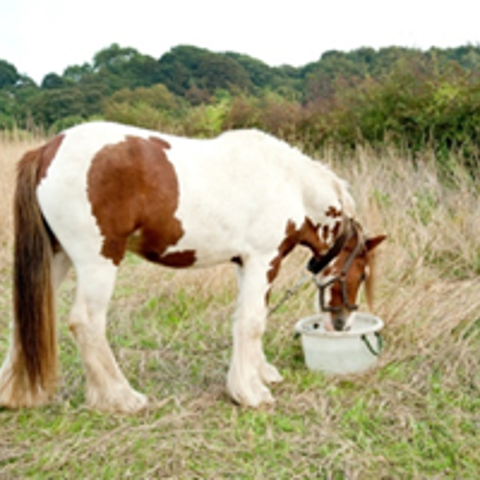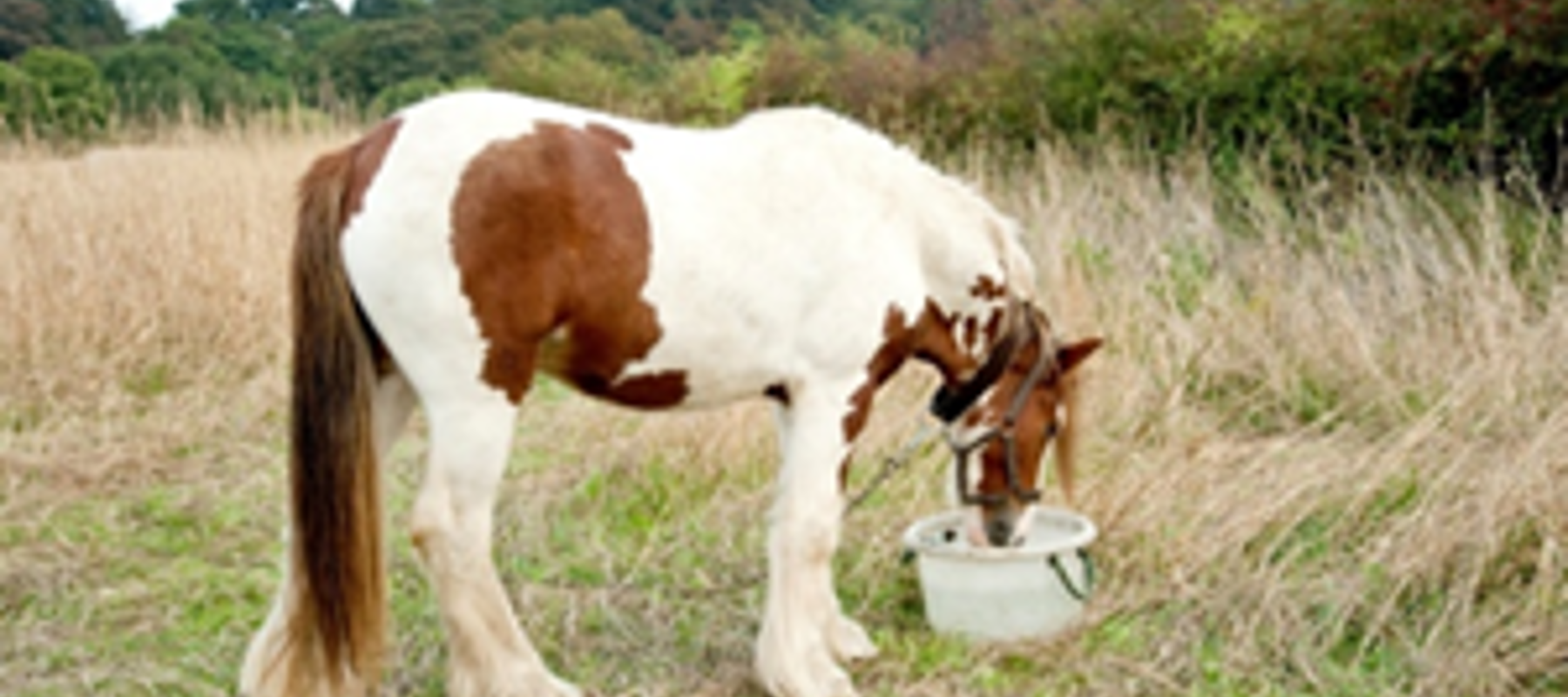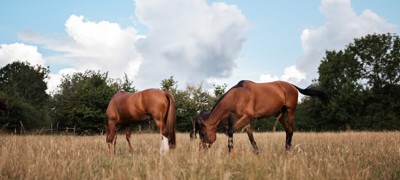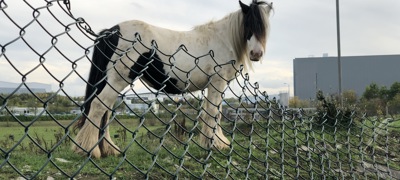Tethering is the practice of securing a horse to an area with a long rope or chain tied from its headcollar/neck strap to a stake in the ground.
Is tethering illegal?
Tethering is not illegal, but the horse owner must ensure the horse’s welfare needs are met. Tethered horses can often be seen on roadside verges or in public spaces, sometimes without the landowner’s permission, and in such cases, this is called fly grazing.
The BHS recognises that tethering is not the ideal way of keeping a horse, but if done correctly it can be an effective short-term solution. There are acceptable standards of tethering that are recommended in the Codes of Practice to ensure the horse’s welfare is not compromised. Tethering shouldn’t be used as a long-term means of keeping a horse as this can lead to a failure to meet the horse’s basic welfare needs as set out in the Animal Welfare Act (2006), Animal Health and Welfare (Scotland) Act 2006 and Welfare of Animals Act (Northern Ireland) 2011.
Acceptable standards of tethering
Access to clean fresh water
chevron-down
chevron-up
Ideally this should be available at all times, however, some owners of tethered horses do not leave water on site permanently as the buckets may be knocked over, stolen or thrown away. If this is the case, water must be offered at regular intervals throughout the day. It is preferable to use a tyre to secure the water bucket than to offer water periodically.
Good grass supply
chevron-down
chevron-up
Many horses will thrive on a grass only diet, but tethered horses should be moved regularly to make sure they have a constant supply of fresh food. During the winter months, or any other time when grass is limited, additional forage such as hay or haylage may need to be provided.
Body condition
chevron-down
chevron-up
The horse looks to be in good condition with a healthy covering of fat.
Environment
chevron-down
chevron-up
The area is safe and has good drainage. Hedge lines, or a built structure such as a wall, act as a wind break.
Tethering equipment
chevron-down
chevron-up
The horse has been tethered using a broad leather neck strap and is wearing a well fitted headcollar.
Tethering equipment
chevron-down
chevron-up
The chain is an appropriate length, so the horse has enough space to move around its tethered area. Chains should be at least 20ft (6-7metres) long. A swivel device should be used on both ends of the chain.
Poor standards of tethering
Rugging
Horses don’t feel the cold like we do and naturally grow a thick coat in winter to keep themselves warm. Their coat also produces natural oils to help keep them waterproof. Many horses can adapt well to winter weather and easily cope without a rug as long as they have food to eat and a form of windbreak/shelter during adverse weather.
Learn more about how horses naturally keep warm.
Natural environment and behaviour
As tethering confines horses to one area this can restrict natural foraging and roaming behaviours, although this can be improved if the horse is regularly moved to fresh grazing.
The horse’s need for companionship and social interaction are also key characteristics to consider. Tethered horses will benefit from being able to see other equines, however they should also not be positioned so close that their tethers can become tangled with each other. Tethering denies the horse any physical, or social interaction with other horses.





